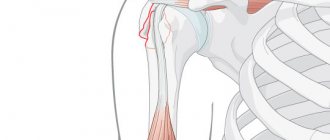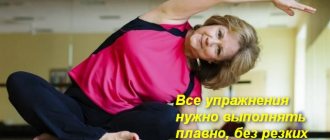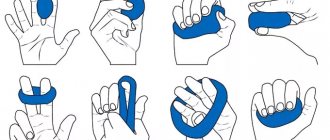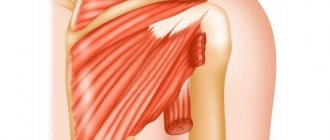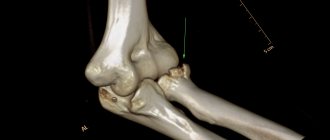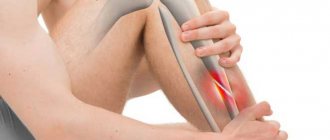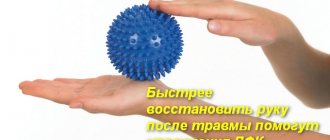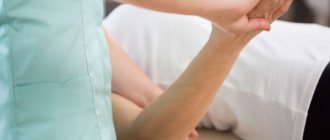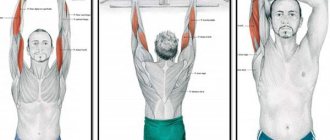A humerus fracture is a serious injury. The shoulder joint is the most mobile. His injuries significantly affect a person’s ability to work and activity. Shoulder fractures can be open or closed, with or without displacement. Depending on the location of the violation of the integrity of the bone tissue, the following types of humerus fractures are distinguished:
- fracture of the head, surgical, anatomical neck, tubercles;
- fracture of the body of the humerus;
- fracture of the trochlea, external and internal epicondyles.
After a shoulder fracture, the patient abstains from any activity that causes pain for a long time. Doctors recommend avoiding pulling and pushing movements, lifting heavy objects, and activities that involve raising your arms. Physical therapy allows the healing process to proceed without complications. Rehabilitation specialists at the Yusupov Hospital individually select a set of exercises, taking into account the time and location of the fracture, the patient’s condition and the presence of concomitant diseases. To speed up the recovery of upper limb function, physiotherapists provide complex treatment, including massage and electrical procedures.
At the Yusupov Hospital, all conditions have been created for the rapid recovery of patients with a fracture of the humerus. Exercise therapy for a shoulder fracture begins as soon as possible. Patients perform exercises under the guidance of a senior exercise therapy instructor. During rehabilitation, patients are consulted by a neurologist and traumatologist. Rehabilitation specialists use innovative methods of physical rehabilitation.
Physical therapy for a humerus fracture
Exercise therapy after a shoulder fracture is carried out at the immobilization stage of treatment, in the first 3 weeks after the fracture. Rehabilitation specialists at the Yusupov Hospital individually select a set of physical exercises, which the patient performs for 30 minutes, 6-8 times a day. The arm must be in a sling at all times, except during activities. Active movements (rotation, flexion and extension, inward and outward rotation) in the hand, wrist and elbow joints stimulate blood circulation in the hand, reduce swelling and reduce the risk of blood clots.
Pendulum-like movements of the arms are excellent for relieving pain at any time. The patient can remove the affected limb from the bandage and, in a standing position, bending forward, make several pendulum-like swings with his hand. Rehabilitators include the following exercises in the exercise therapy complex after a fracture of the humerus:
- abduction and adduction of the upper limb or elbow to the body;
- crossing your arms in front of your chest;
- clap first in front of the chest and then behind the back;
- turns the body with hands clasped in front of the chest.
When discharged home, the patient receives a list of exercises that must be done daily.
1st period
Classes begin on the second day after the fracture. The hand is allowed to be removed from the bandage and cushion during classes.
Starting position - standing
1. Hands into a fist. Squeeze and unclench. 2. Hands into a fist. Circular movements in the wrist joints in both directions. 3. Shoulders up - down, forward - back, circular movements forward - back. 4. Brushes in a lock. Lock on the chest, to the right shoulder, to the left shoulder. 5. Tilt towards the sore arm. Pendulum movements of the affected arm forward and backward, circular movements in both directions, swings to the side - forward, to the side - back (at first with a small amplitude, and then more and more). 6. Tilt towards the sore arm. Brush to shoulder. Moving the bent arm to the side (you can use the healthy one).
Physical therapy after a shoulder fracture
The functional stage of rehabilitation lasts 3-6 weeks. 3-4 weeks after a shoulder injury, the patient is recommended to undergo regular physical therapy exercises. Rehabilitation specialists at the Yusupov Hospital use modern devices from leading European manufacturers to restore limb function. The goal of rehabilitation at this stage is to restore the previous range of active and passive movements. The set of exercises is constantly expanding, but the starting position remains the same.
The patient should strive to gradually straighten the arm and perform exercises while standing without bending forward. He should perform the following physical exercises 4-6 times daily:
- raising a straight arm in front of you;
- swing your arms forward, backward and to the sides from the starting position “standing with a slight bend forward”;
- abducting the arms behind the back with the shoulder blades together (the arms bent at the elbows should first be in front of the chest).
At this stage of recovery, rehabilitation therapists use block simulators. Patients use them to lift and lower the injured limb, and spread their arms to the sides. Therapeutic exercise is complemented by water procedures. The patient is recommended to perform various movements of the limbs in the pool, crossing his arms in front of the chest, and exercises simulating freestyle and breaststroke swimming. Staying in water increases the effectiveness of training, puts additional stress on the muscles, and improves blood circulation in them. Physiotherapists include 10-12 magnetic therapy and balneological treatment procedures in the rehabilitation complex.
Vertical layout
Stand straight, feet shoulder-width apart, arms hanging freely. Move your arms to the sides (as shown in the figure) and raise them as high as possible. Hold for 5 seconds. Return to the starting position. Repeat 10 times.
Training stage of rehabilitation
7-8 weeks after a fracture of the humerus, the patient, under the supervision of rehabilitation specialists at the Yusupov Hospital, completely restores the functionality of the injured shoulder and upper limb. Further physical exercises are aimed at strengthening the muscles and fully restoring range of motion. Exercise therapy classes should take place 3-4 times a day. The patient is given a set of exercises, each of which he is recommended to repeat 10-12 times.
Physical therapy at this stage of recovery after a shoulder fracture consists of the following exercises:
- raising your arms in front of you from a standing position;
- abduction, adduction, rotation, pronation and supination of the upper limb;
- hand rests and push-ups;
- hanging on a crossbar or wall bars;
- manipulations with dumbbells weighing no more than 5 kg and with medicine balls.
Stretching exercises are effective: placing a gymnastic stick or towel behind your back, “walking” your fingers along the wall to the sides and up. These manipulations allow for complete restoration of arm mobility in all directions.
With a rationally selected rehabilitation scheme, complete recovery of a patient with a shoulder fracture occurs in 2-3 months. Only after this do rehabilitation specialists prescribe exercises designed to develop stretching, physical strength, and endurance.
Horizontal rotation
Stand up straight, take the stick with both hands and raise it to shoulder level. Rotate the stick to the side until you feel tension. Hold the achieved position for 5 seconds. Then repeat the exercises on the other side. Repeat 10 times.
Physical therapy after a shoulder fracture
Physical therapy for a fracture of the shoulder joint begins 10-14 days after applying the bandage. First, patients perform passive exercises, and then active ones with a further increase in load. The objectives of exercise therapy after a fracture of the shoulder joint are as follows:
- restore the range of motion of the injured limb;
- restore tissue elasticity;
- strengthen the muscular system.
The rehabilitologist creates a set of exercises individually for each patient. First, the patient performs the following exercises:
- rocking the upper limb back and forth in the shoulder joint with relaxed muscles, tilting the torso towards the injured arm;
- clenching and unclenching fingers;
- flexion and extension of the limb at the elbow joints, grasping the lower third of the forearm of the sore limb with the healthy hand.
At the end of the second week, the rehabilitator recommends performing small-amplitude pendulum-like swinging movements to the side, small circles with a straight arm. From the fifteenth day, exercises begin to be used that prepare the arm for lifting to a horizontal level: the amplitude of pendulum-like movements with a straight arm increases, swinging movements of the limb are performed to the side, pushing the sore arm with the healthy arm with short pushes. There are many different exercises for physical therapy for a fractured shoulder joint. The video is on the Internet. Rehabilitation specialists at the Yusupov Hospital do not recommend performing them without consulting a specialist.
The patient can make a slight tilt of the body towards the sore arm, throw the arm behind the back with a slight swinging movement, bending it at the elbow, gradually increasing the amplitude. It is recommended to slowly raise your elbows, reducing the load on the deltoid muscle by resting your palms on your torso. Rotational movements in the shoulder joint are effective when the torso is tilted towards the affected limb (the arm hangs freely with the elbow extended). You can move the elbow to a horizontal position with the support of the healthy limb on the lower third of the forearm of the injured arm. When performing this exercise, the sore arm should be bent at the elbow joint at an acute angle.
Rehabilitation specialists at the Yusupov Hospital will draw up an individual plan for physical therapy after a fracture of the humerus. To effectively restore limb function, rehabilitation clinic specialists use modern simulators and proprietary techniques. Call the Yusupov Hospital and the coordinating doctor will make an appointment for you with a doctor.
Stretching with a stick
Stand straight with your feet shoulder-width apart. Take the stick behind your head with your healthy hand, move your affected hand behind your back and take the other end of the stick. With your healthy hand, pull the stick up, thereby increasing the flexion of your affected arm. Hold for 5 seconds. Repeat 10 times.
Forecasts for the future
The prognosis for full recovery of arm function after a shoulder fracture is influenced by several factors:
- localization;
- its type (closed/open, impacted/with or without displacement);
- timeliness of assistance;
- terms and quality of rehabilitation.
The type and location of injury influence prognosis. For example, after a complex fracture of the greater tubercle of the humerus, rehabilitation is sometimes ineffective and patients do not achieve full restoration of the functions of the upper limb.
But if the patient is unable to influence the first three factors, then the success of rehabilitation almost entirely depends on his efforts. For example, if a patient was operated on for a complex impacted fracture of the surgical neck of the humerus, but rehabilitation after a fracture of the surgical neck of the humerus was early and complete, then the prognosis for the patient’s recovery is quite favorable.
But if a patient with an uncomplicated fracture without displacement neglected rehabilitation exercises, then the prognosis for his recovery will be less favorable.
Late rehabilitation measures are dangerous due to the formation of contractures in the joints of the arm (shoulder, elbow) and a sharp limitation of its functionality. Early movements in case of a fracture of the neck or other part of the humerus are the key to successful rehabilitation.
How quickly does rehabilitation take place?
Whatever the cause of mechanical damage to the humerus, its treatment may take different periods that differ significantly from each other.
Treatment time depends on the following factors:
- Is there a bias;
- Where exactly did the bone break;
- Has the integrity of muscle tissue and skin been compromised?
- General condition of the patient’s body;
- Age of the patient;
- Whether surgery was performed and much more.
Fixing the arm in a cast for a long period leads to disruption of the muscle tissue and the arm as a whole. To restore its functionality, it is necessary to carry out a series of rehabilitation procedures that will help restore tone and strength to the arm muscles.
External rotation
Stand with your extended arm away from the door. Attach the end of the expander to the door at waist level, and take the other end of the expander with your developing hand. Bend your elbow 90 degrees and place it on your stomach. Keeping your elbow tucked in, rotate your forearm away from the door—outward. Then slowly return your hand to the starting position. It is important to keep your forearm parallel to the floor. 2 sets of 15 reps.
Shoulder abduction
Stand up straight, arms at your sides, palms facing you. Move your straight arm to the side and then as high as possible. Hold for 5 seconds, return to starting position. Repeat 10 times. Take a small weight in your hand when the exercise is no longer difficult.
Shoulder extension
Stand straight with your feet shoulder-width apart. Extend your arm backwards (as shown in the picture) and hold for 5 seconds. Then return to the starting position. Repeat 10 times.
Resistance to bending
Stand with your back to the door. Attach the end of the expander to the door at waist level, and take the other end of the expander with your developing hand. Pull your arm forward, bending it at the shoulder. 2 sets of 15 reps.
Arm abduction while lying down
Lying on your healthy side, the arm you are working on is relaxed in front of you. Slowly raise the arm you are working on as high as possible. 2 sets of 15 reps. Take a small weight in your hand when the exercise is no longer difficult.
Symptoms
Before massaging the shoulder joint after a fracture, you should first make sure that this procedure will not harm. This requires an examination (X-ray), and the diagnosis must be made by a traumatologist. But the main symptoms are also taken into account.
11
Signs include:
- shoulder shortening;
- pain in the area of injury;
- there may be bruising and swelling at the site of injury;
- if there is a displaced fracture, then deformation of the shoulder may be observed;
- difficulty moving the joint;
- When palpating the area of injury, cracking or crunching sounds may occur from bone fragments.
Sometimes with impacted traumatic injuries, when a broken piece of bone is driven into another, a strong fixation can occur.
During this damage, pain and other unpleasant symptoms are mild; for this reason, the patient may simply not notice it for a long time. It is very important to be attentive to your body, undergo a timely examination and consult a doctor.


